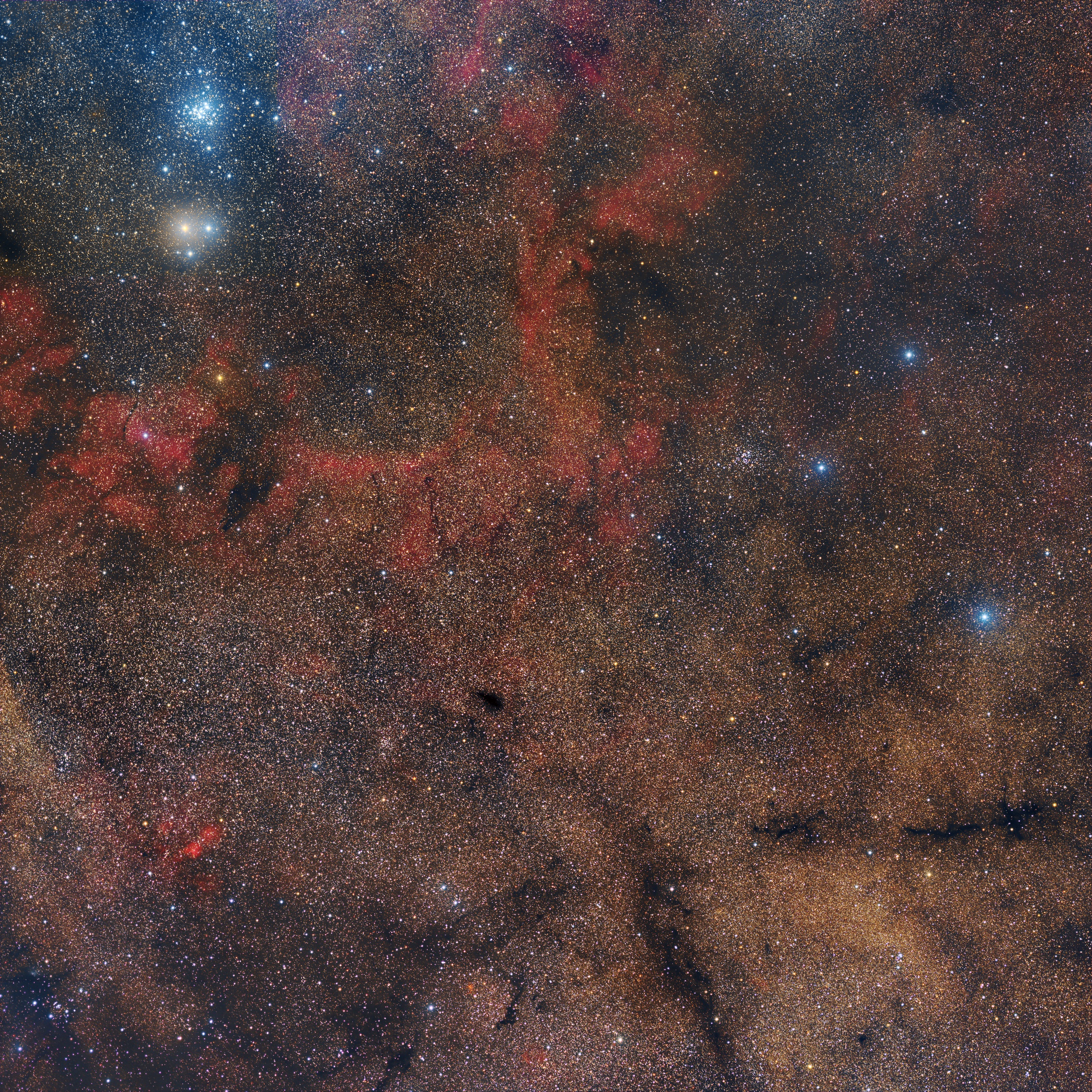Barnard 235 from Telescope Live AUS-2-CCD
From time to time, I obtain data sets from remote observatories to complement my own imaging projects. One of my favorite sources for such data is Telescope Live, which operates a network of professional-grade telescopes located in some of the world’s best observing sites — including Chile, Australia, and Spain. These observatories provide access to pristine southern skies and exceptionally deep data, perfect for exploring faint interstellar structures that are otherwise out of reach from my own latitude.
One of the data sets I received was from the dark nebula Barnard 235, a small but fascinating cloud of interstellar dust located in the constellation Scorpius. This part of the sky is among the richest and most complex in the Milky Way, teeming with glowing emission regions, bright star clusters, and intricate webs of dark nebulae. Against such a vivid background, Barnard 235 stands out as a patch of deep cosmic shadow — a cold, dense region where starlight seems to fade away into the void.
Dark nebulae like Barnard 235 are molecular clouds, composed primarily of hydrogen gas mixed with fine dust particles that effectively absorb and scatter visible light. They are among the coldest and quietest regions of the galaxy, with temperatures just a few tens of degrees above absolute zero. Yet, despite their darkness, these clouds are the cradles of new stars. Within them, gravity slowly gathers material into dense cores, which over time may collapse and ignite, giving birth to the next generation of stars. What appears as an absence of light is, in reality, a birthplace of future brilliance.
The Scorpius region, where Barnard 235 resides, is particularly captivating because of the dramatic interplay between light and shadow. Nearby emission nebulae cast a faint reddish glow, while bright blue stars illuminate surrounding dust with reflection halos. Against this luminous backdrop, Barnard 235’s dark silhouette becomes even more striking — a reminder of the hidden complexity of the interstellar medium.
The data set provided by Telescope Live was of excellent quality, allowing for fine detail in both the stars and the faint structures of the surrounding dust. I performed data calibration and registration, followed by final image processing entirely in PixInsight, which remains my preferred tool for deep-sky work. The challenge with processing dark nebulae lies in maintaining a delicate balance between contrast and subtlety. It’s easy to overemphasize the darkness and lose the soft transitions that define the nebula’s shape. Through careful background extraction, nonlinear stretching, and selective noise reduction, I worked to preserve the natural gradations that reveal the three-dimensional structure of the cloud.
The finished image shows Barnard 235 as a dark, irregular form drifting through a star-filled background. The surrounding region glows softly with the warm colors of the Milky Way’s inner arms — hints of diffuse nebulosity and the faint blush of interstellar dust. The nebula’s edges are slightly translucent, revealing faint layers of dust that seem to fade gradually into the surrounding starlight.


The images were taken with the following equipment:
- Location: Heaven’s mirror Observatory, Australia
- Telescope: Takahashi FSQ-106ED
- Focal length [mm]: 382
- Focal ratio: 3.6
- Mount: Paramount MX+
- Camera: FLI Proline 16803
- Filter: L:R:G:B
- Exposure time [min]: 90:90:90:90
- Resolution: 4.74″/px


Leave a reply